




OUR BEST EVER OFFER - SAVE £100/$100
JOIN THE WORLD'S LEADING PROFESSIONAL DEVELOPMENT PROGRAMME
- 12 months membership of Elite Soccer
- Print copy of Elite Player & Coach Development
- Print copy of The Training Ground
Defensive team shape
The key with this session is to teach defenders when to mark the man and when to mark space, with the philosophy of ‘being in position when out of possession’.
| Area | Half pitch |
| Equipment | Ball, goal |
| No. of Players | 18 – 7 defenders (a back four plus 3 midfielders) 10 attackers 1 goalkeeper |
This session is about the reorganisation of defensive shape from a dismantled starting point. The key is to teach defenders when to mark the man and when to mark space, with the philosophy of ‘being in position when out of possession’.
There are instances in every match when the defence finds itself out of formation shape, so it’s important for players to be reminded of their roles and positions. We’ll always practise this session on a Thursday ahead of the weekend game.
What do I get the players to do?
The coach, standing on the halfway line, serves the ball to one of his 10 attacking players, who are lined up in a 3-2-5 formation. In opposition are seven defensive players - three acting as midfielders, plus a back four that is positioned in an unorthodox way, with central defenders pushing in opposite directions and full-backs wide on the flanks.
Depending on the position of the attacking player who receives the ball, each defender or defensive-minded midfielder must react accordingly, either in making a recovery run, marking his man, delaying play, or regrouping into a unit with other defenders.
When the ball is served short
If the attacking player in possession of the ball can be pressed, defenders should try to force him either sideways or backwards. When an individual cannot press, the whole defence retreats by dropping a defensive midfielder in front of the back four to act as a screen, preventing or delaying strikers receiving a pass (1a/1b/1c).
1a

1b
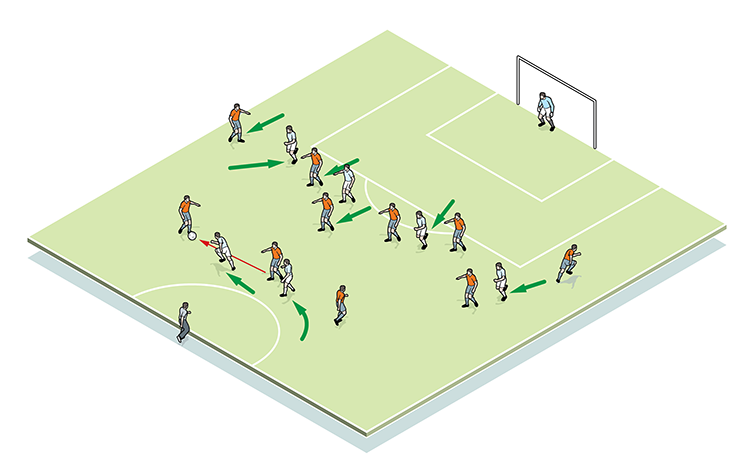
1c
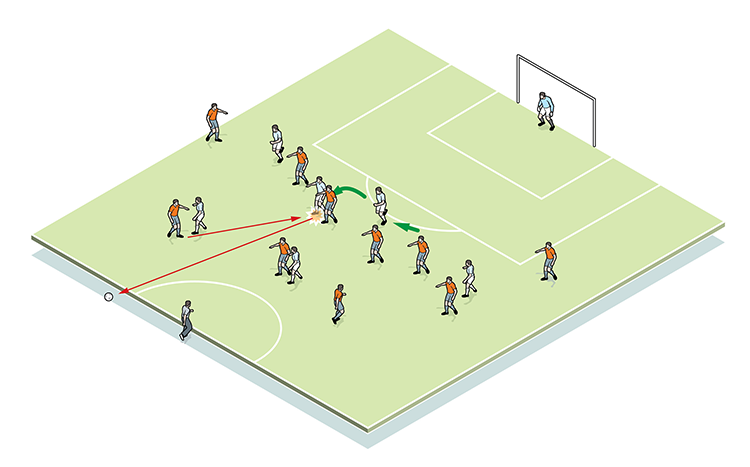
When the ball is served long
If the ball is played in behind, defenders must make a quick decision - mark the man or mark the space. If, for example, the ball is played into the left-hand corner and the right-back cannot get across to press the ball, he must cover the space to defend the near post. The central defenders then retreat to the middle area and the left-back covers the space at the far post. Adopt this principle on both flanks (2a/2b/2c).
2a
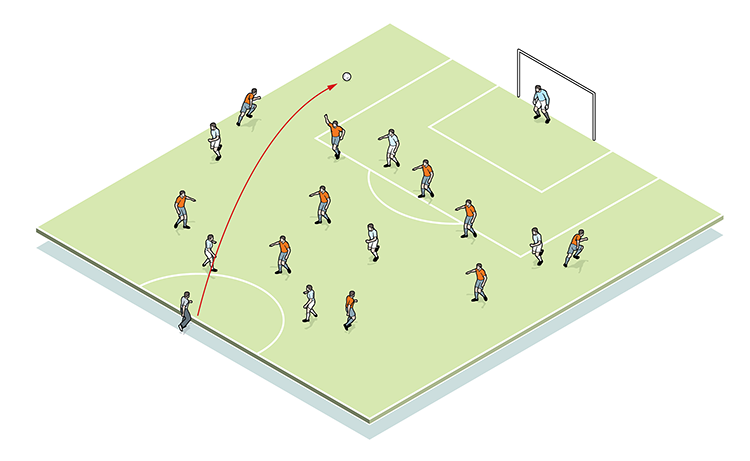
2b
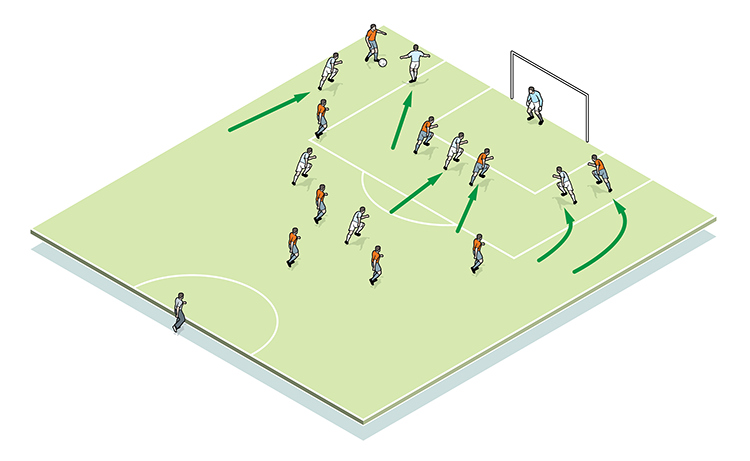
2c
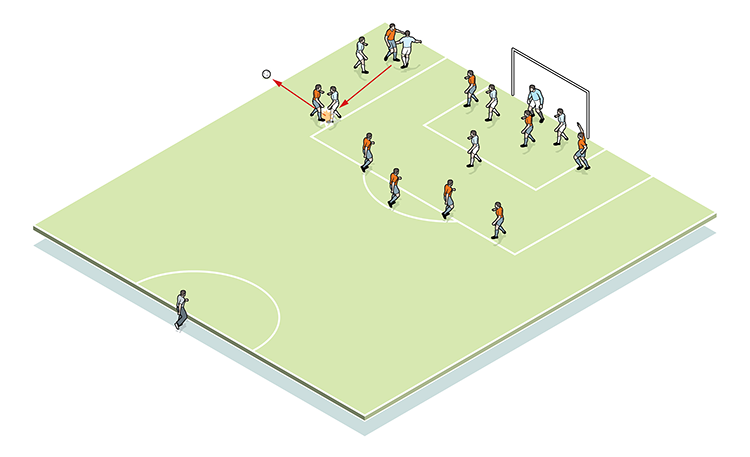
What are the key things to look for technically/tactically?
This is an overload situation, so communication between defenders and awareness of each others’ roles is essential. The decision of when an individual should press the ball or when the defence as a whole should retreat needs to be made quickly, but every decision should be purposeful and aggressive.
No matter what the defence does, it must always look to regain shape quickly, delaying the progress of attacking players. Each recovery run is vital, because the whole defence is put under threat if one player fails to recover effectively.
Related Files
Editor's Picks
Attacking transitions
Deep runs in the final third
Using the goalkeeper in build-up play
Intensive boxes drill with goals
Penetrating the final third
Creating and finishing
My philosophy
Pressing initiation
Compact team movement
Coaches' Testimonials

Alan Pardew

Arsène Wenger

Brendan Rodgers

Carlos Carvalhal

José Mourinho

Jürgen Klopp

Pep Guardiola

Roy Hodgson

Sir Alex Ferguson

Steven Gerrard
Coaches' Testimonials

Gerald Kearney, Downtown Las Vegas Soccer Club

Paul Butler, Florida, USA

Rick Shields, Springboro, USA

Tony Green, Pierrefonds Titans, Quebec, Canada
Join the world's leading coaches and managers and discover for yourself one of the best kept secrets in coaching. No other training tool on the planet is written or read by the calibre of names you’ll find in Elite Soccer.
In a recent survey 92% of subscribers said Elite Soccer makes them more confident, 89% said it makes them a more effective coach and 91% said it makes them more inspired.
Get Monthly Inspiration
All the latest techniques and approaches
Since 2010 Elite Soccer has given subscribers exclusive insight into the training ground practices of the world’s best coaches. Published in partnership with the League Managers Association we have unparalleled access to the leading lights in the English leagues, as well as a host of international managers.
Elite Soccer exclusively features sessions written by the coaches themselves. There are no observed sessions and no sessions “in the style of”, just first-hand advice delivered direct to you from the coach.







